"Liquid nails": which are the best to choose and how to use them?
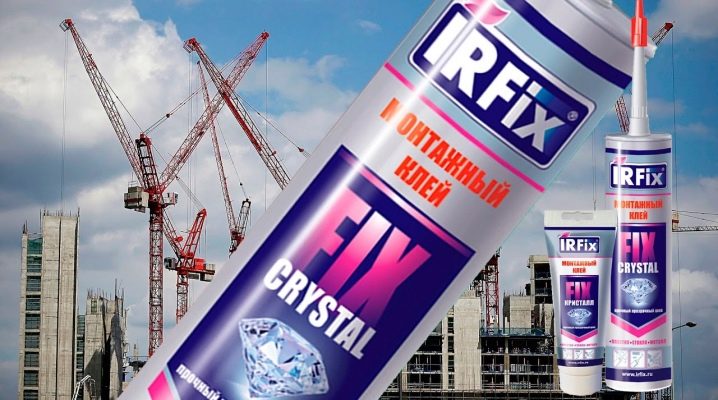
"Liquid nails" is an assembly tool invented in the middle of the 20th century in the USA on the basis of conventional glue. A special clay was used as a binder, and a synthetic rubber - neoprene - became a solvent. "Liquid nails" quickly found a response from the buyer because of their extraordinary qualities, which previously could not be achieved with fasteners without the use of breakdown fixation: nails, screws, etc. Over time, heavy toxic substances were removed from the composition: toluene and acetone.
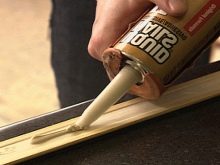
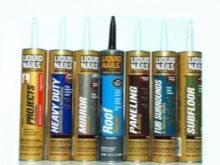
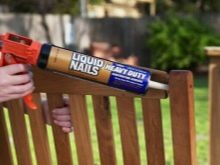
What it is?
At the moment, the building materials market sells "liquid nails" created according to a special recipe:
- a special type of Texas clay - has high plasticity, provides a very powerful bond of working surfaces;
- synthetic rubber - has some toxicity, enhances the adhesion and strength of the composition;
- polymer compounds - give additional qualities in various variations;
- titanium oxide, dye.
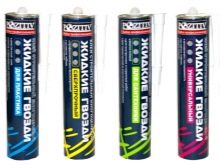

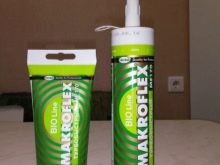
In addition to the original recipe, there is an alternative version of "liquid nails":
- chalk is the main binder, replaces clay, but is inferior to it in strength, gives the composition a beautiful white color;
- aqueous emulsion solvent;
- synthetic additives.
Acetone and toluene are present in low-quality versions of "liquid nails", they reduce the cost of the product, but make the use of the composition hazardous to health.

Appointment
The main function of "liquid nails" is to connect 2 or more planes or other objects to each other, they can also be used instead of a sealant, although they are inferior to similar means in terms of quality characteristics. The bond strength can reach 80 kg / sq. cm, while liquid nails are able to adhere even loose surfaces, creating a strong connecting layer between the parts.
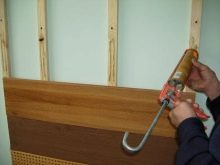

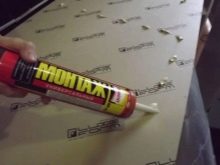
They are used for the installation of various materials, including:
- brick structures;
- drywall sheets;
- glass, mirror and ceramic surfaces;
- cork, wood and its derivatives: fiberboard, OSB, chipboard, MDF, etc .;
- polymeric materials: polystyrene, plastic, etc.
- metal surfaces: aluminum, steel.

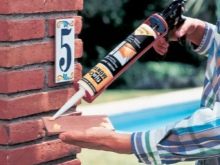
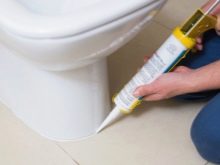
At the same time, the scope of application affects:
- residential and non-residential premises, for residential it is better to use compounds without neoprene;
- rooms with low and high humidity: bathrooms, kitchens, etc.
- window structures;
- minor repairs to the finishing: the fallen off panels and tiles on "liquid nails" are held stronger than on standard tools, but the high price makes their large-scale use in this area unprofitable;
- installation of heavy finishing materials such as bamboo wallpaper.
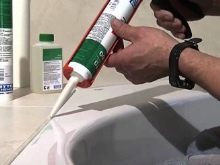
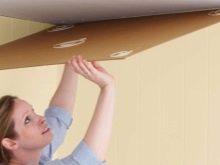

It is undesirable to use liquid nails to fasten wet wood structures. Also, these waterproof "nails" are suitable for almost any flooring, such as tiles.
Types and characteristics
"Liquid nails" are produced using two main technologies. In the first version, the binder is clay, in the second - chalk, in addition, the compositions are subdivided according to the specifics of the application, depending on the presence of synthetic additives that provide additional protective properties.

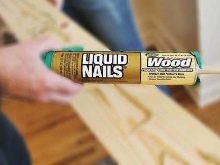
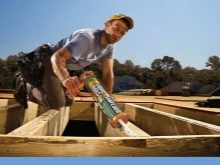
Transparent heat-resistant liquid nails sometimes, according to GOST, can have a beige color. Their technical characteristics allow this.
The extraordinary positive features of liquid nails, with an almost complete absence of shortcomings, distinguish them from other representatives of the installation segment of the building materials market.
The characteristic qualities include:
- huge adhesion strength of working surfaces, withstanding a colossal load - 80-100 kg / sq. cm;
- the possibility of effective application of the product on almost all types of surfaces;
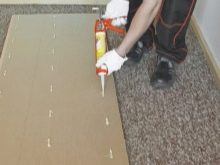
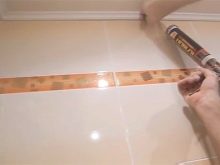

- the form of release in a tube provides a simple and convenient work with the composition;
- the solution can connect loosely adjacent surfaces, which is inaccessible for other liquid products, the shape of the surface also does not play a negative role;
- does not violate the integrity of the materials to be joined, like punch-through assembly tools: nails, dowels, screws, self-tapping screws and others that can be compared in terms of bond strength;
- the hardened layer does not collapse from sluggish processes, for example, corrosion, like metal analogs, or decay;
- installation work is characterized by silence, absence of dirt and dust;
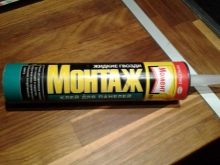

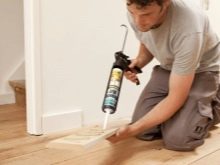
- setting speed is several minutes, complete drying ranges from several hours to a day, depending on the components of a particular type;
- manufacturers of quality "liquid nails" do not use toxic components; neoprene has some toxicity, but significantly enhances the properties of the composition and is an exception to this rule;
- complete incombustibility of the frozen layer, the composition does not smolder and does not ignite, does not emit toxic substances when heated;
- high moisture and frost resistance in species based on neoprene solvent, in water-based ones - weak;
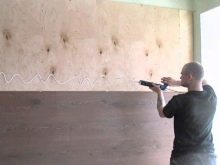
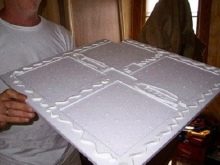
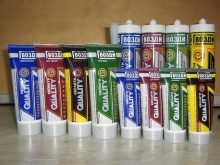
- there is no strong unpleasant odor, although some species may smell slightly in a certain way;
- low consumption - on average, one drop of "liquid nails" is consumed to secure 50 kg of mass.
When using the tool according to the specifics of their subspecies, there are no practical drawbacks.
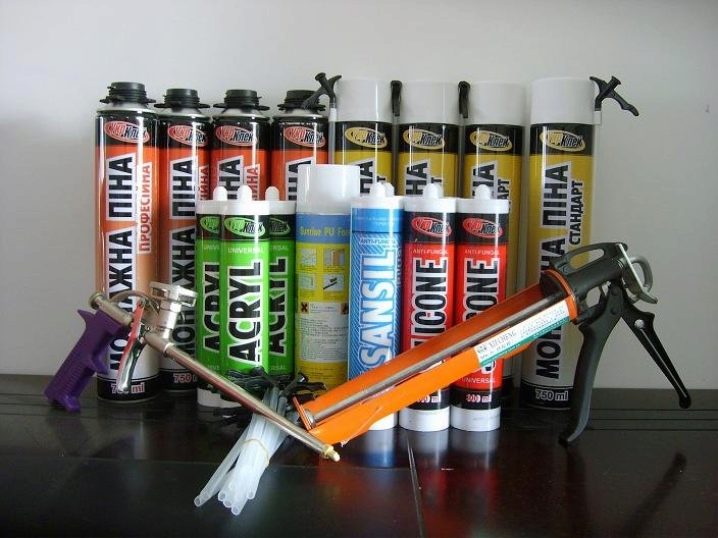
In addition to the classic clay-based liquid nails, many manufacturers are producing an alternative version that uses chalk as a binder.
There are two main types with their inherent features:
- clay-based - original compositions are distinguished by high strength and plasticity;
- on the basis of chalk - less durable than clay, have a pleasant white color.
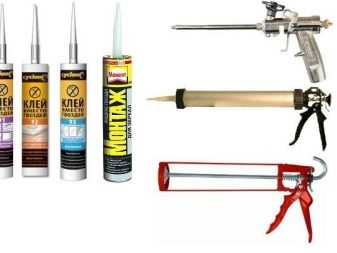
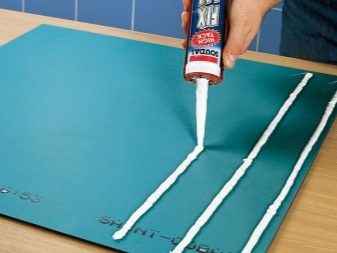
The solvent used to dissolve the components also plays an important role in the performance of the formulation.
There are two main types.
Neoprene (synthetic rubber)
This composition is characterized by:
- high bond strength for various types of surfaces, including metal;
- not suitable for working with some polymer materials: acrylic, plastic, etc.;
- high moisture resistance;
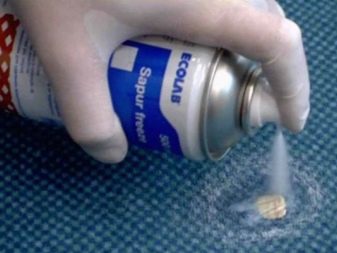
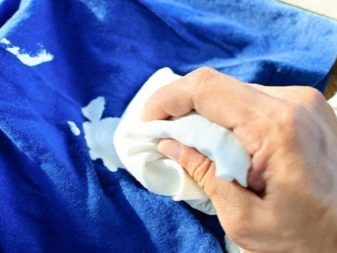
- resistance to temperature fluctuations;
- frost resistance;
- fast setting and a relatively short period of complete drying;
- low toxicity and pungent odor; during work, ventilation of the room and protective equipment are required: mask and gloves. The smell disappears within a couple of days.
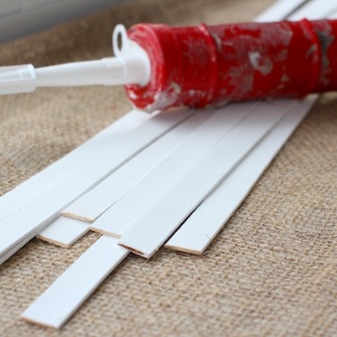
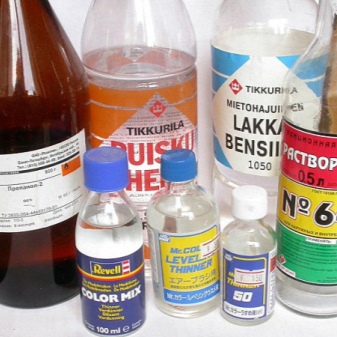
Water-based acrylic based
Such compositions are characterized by a lower adhesive force, however, they are completely non-toxic, and there are no unpleasant odors.
They are also characterized by:
- good adhesion to polymeric and porous materials;
- poor resistance to temperature fluctuations;
- low frost resistance;
- high vulnerability to the cooling-heating cycle;
- poor moisture resistance - they are extremely unrecommended for work in bathrooms and even kitchens.
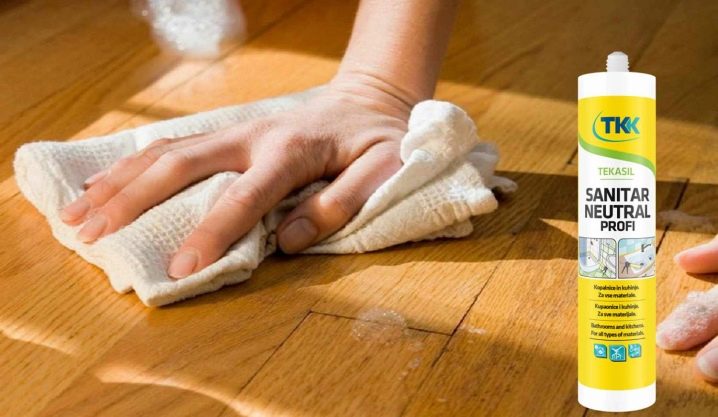
In addition to the main components - a binder and a solvent, various synthetic additives are included in the composition of "liquid nails". They enhance certain protective qualities of the composition, thereby expanding the scope of its application in a specific environment.
There are two main types of "liquid nails":
Universal
They can be used under various conditions, while the protective properties of the composition are moderate and with pronounced negative factors, its effectiveness begins to decline sharply.
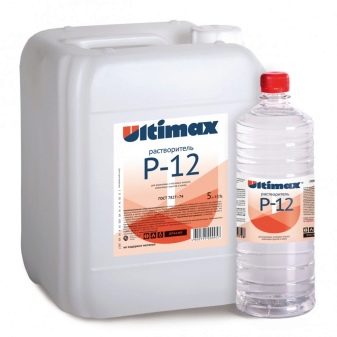

Specialized
Such formulations are intended for use in specific conditions, where they show their qualities in the best way.
They are divided into many subspecies with characteristic properties, including:
- for work indoors and outdoors;
- for dry rooms and moisture resistant compounds;
- for the installation of heavy objects;
- composition with increased strength;

- with accelerated solidification;
- for work on glass, mirror and ceramic surfaces;
- composition for work on polymer surfaces and others.
In this case, one composition can combine several specific features, for example, a composition for the installation of heavy objects with accelerated hardening for rooms with high humidity, etc. The purpose of the composition is one of the main criteria when selecting a specific brand for solving urgent problems.
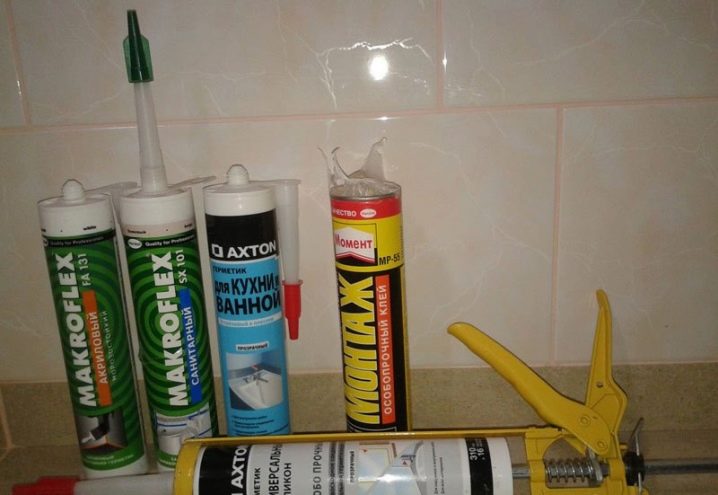
Manufacturers overview
A fairly large number of brands producing "liquid nails" are represented on the building materials market. The main properties of the composition are determined by its components, however, the quality of the raw materials used to create them and the production technology also affect the characteristics of the final product. Installation work is a matter of high responsibility, where a poor-quality product can not only spoil the result, but also entail more serious consequences. In order not to get into a similar situation, it is better to use liquid nails from trusted brands that have gained popularity for the quality of the products, rather than its low cost.
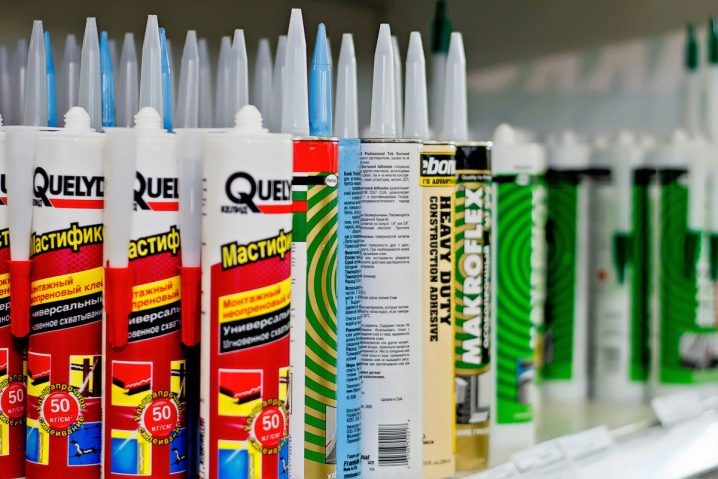
Henkel - a German concern with an impeccable reputation, one of the manufacturers of top quality building materials. It produces liquid nails under the brands "Moment Montage" and "Makroflex" with various specific uses: universal and specialized, among which are compositions for expanded polystyrene, wood, increased strength for metal, fixing plinths and other needs, the composition "Moment Montage Super Strong Plus" withstands load up to 100 kg / sq. cm.
Franklin - an American company that produces liquid nails based on the original technology, it sells products under the Titebond brand. Differs in enhanced strength and a wide selection of compositions with various specificities.
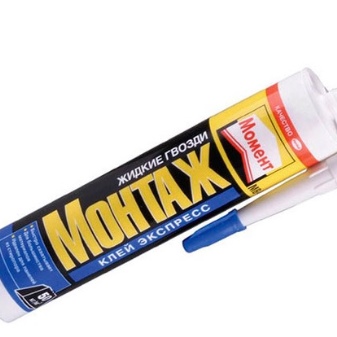
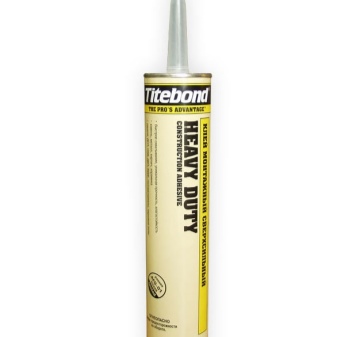
Kim tec - German manufacturer of liquid nails with various specific uses: moisture resistant, universal, extra strong, decorative compositions.
Selena Group Is a Polish company, products are sold under the Titan trademark. A high-quality result is provided by European technologies at an affordable price. Reviews of the products of this company are mostly positive.
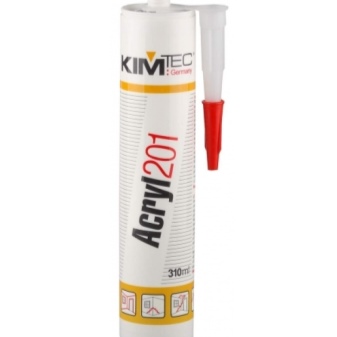
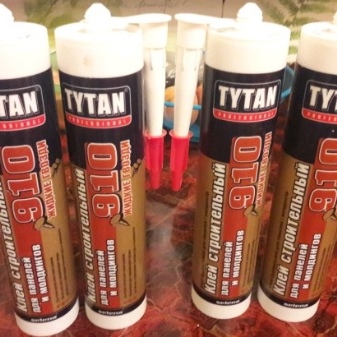
How to choose?
With an extensive selection of "liquid nails" with various performance properties, produced by various companies, the question of the correct selection of an assembly tool capable of solving a specific problem is raised. To this end, it is necessary to take into account the criteria that "liquid nails" meet in order of their importance.
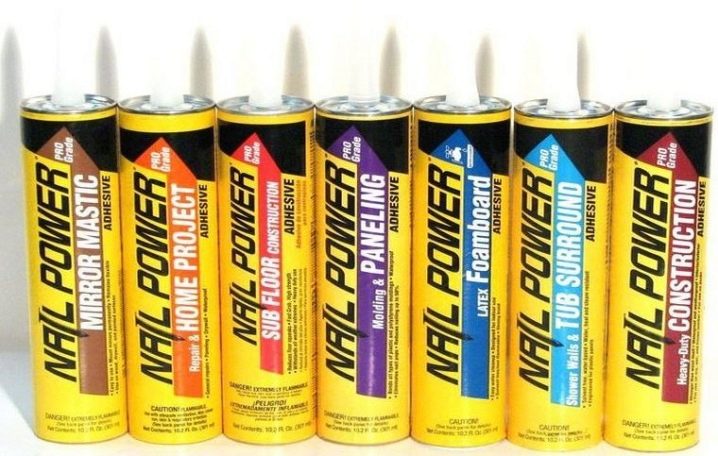
Appointment
Any "liquid nails" have a certain specificity, which is indicated on the product label and flows from the components of the composition. This moment is decisive, because if you buy expensive "liquid nails" from the best manufacturer, which are designed for a dry room, and use them in a bathroom, you can not even think about a good result - the composition will fall off much earlier than planned.
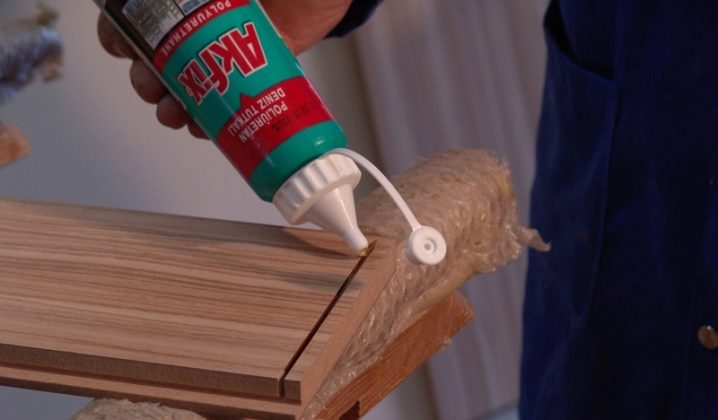
Manufacturer
After determining the appropriate type for the intended purpose, you need to think about the manufacturer. Companies with a reliable reputation, whose product is time-tested, deserve the utmost attention.
Several materials are secondary criteria that can also be taken into account in the selection process.
- Clay or chalk. The clay composition is much stronger, if it is necessary to fasten objects of a significant mass on this issue there can be no two opinions - only clay. If work is carried out with polymeric materials, then it is better to take a chalk composition, for which an aqueous emulsion solution serves as a solvent.

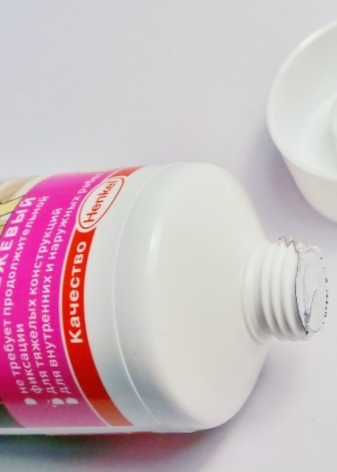
- Setting and final drying time. This parameter comes to the fore when anchoring objects to a wall or ceiling, when you need to support the object until it is fully bonded to the surface. In this case, if a heavy object is being mounted, the setting time cannot be dispensed with, you will have to make a support, otherwise it is likely that the surfaces will diverge even before the glue dries completely.
- Toxic components. The presence of toluene and acetone indicates an unscrupulous manufacturer. These substances are highly toxic and must be handled with extreme care. Neoprene or synthetic rubber is slightly toxic, but significantly enhances the strength of the composition, its use should be accompanied by personal protective equipment and ventilation of the room.
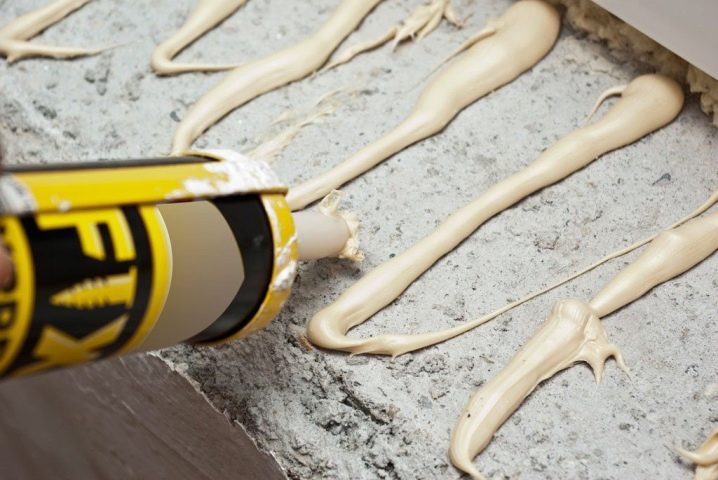
Despite the presence of instructions accompanying the cylinder, and the presence of sales consultants in building markets, the former do not always indicate all the options for use, and the latter do not necessarily have the necessary information for every possible situation. We offer a set of solutions for those who have just started using "liquid nails".
As a universal assembly tool "Extra Strong Moment Installation" from Henkel, the tool is used to fix massive objects when working with stone, wood, including fiberboard, OSB and similar materials, metal surfaces. The product is of high quality and 100% result.
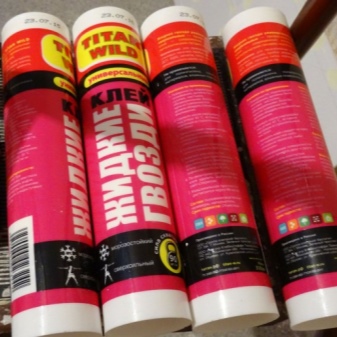
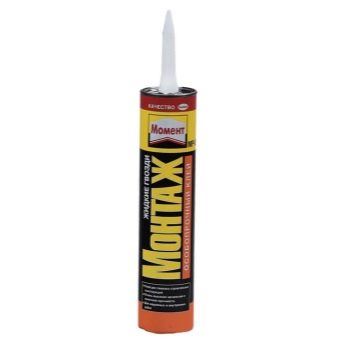
For working with vinyl-like polymers such as polystyrene is well suited "Super Strong Moment Montage" on a water-based basis. Moreover, its use with Teflon or such a polymer compound as polyethylene will be ineffective.
Suitable for interior decoration and installation work "LN601" from Macco... These synthetic rubber “liquid nails” perform well when joining natural wood surfaces, various chipboard types, metal and plastic objects. The weak side of the composition is the inability to properly glue ceramic and mirror surfaces. When working with "LN601" it is necessary to use protective equipment, as with all compositions based on neoprene solvent.
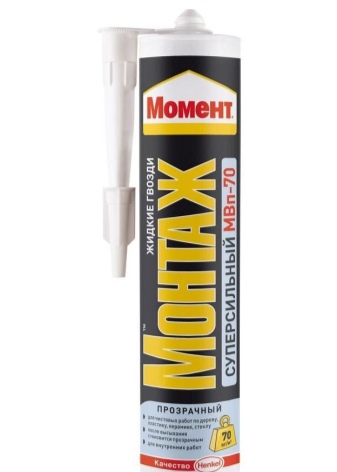
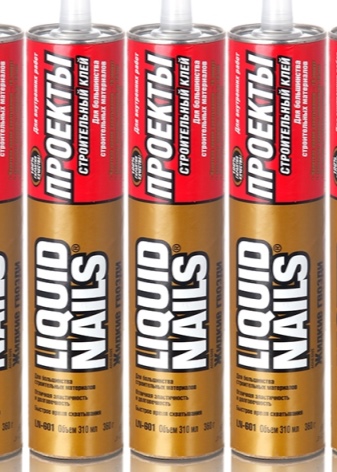
An alternative installation tool for interior decoration is Titebond Multi-Purpose... It also belongs to the group of "liquid nails" that use neoprene as a solvent, so you need to work with it using hand and respiratory protection. It copes well with surfaces made of metal, plastic, natural wood, chipboard and fiber boards, ceramic surfaces. Powerful adhesion properties ensure reliable installation on brick and concrete surfaces of objects and finishes of almost any mass. The formulation is not suitable for polymeric vinyl-like materials such as polystyrene and in places of direct contact with water, such as swimming pools or aquariums.
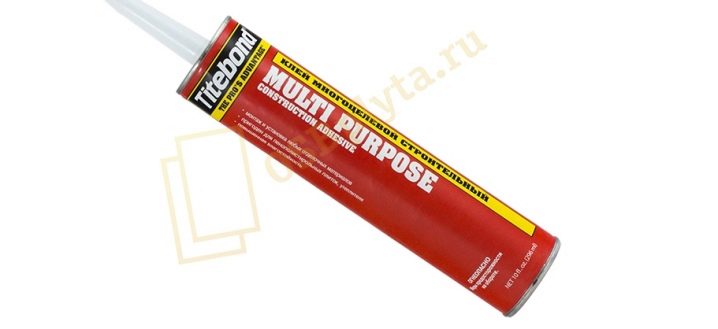
Suitable for ceramic surfaces "Titan WB-50" and "Solvent Free" based on water-based solvents with an accelerated drying time. These formulations are characterized by good moisture resistance and moderate vibration resistance.
For working with mirrored surfaces, it is better to choose "LN-930" and "Zigger 93"... The peculiarity of their composition is in the absence of components that destroy the amalgam - mirror coating.
Rooms with high humidity, such as a bathroom or kitchen, require formulations with powerful waterproofing properties, such as Nail Power and Tub Surround.
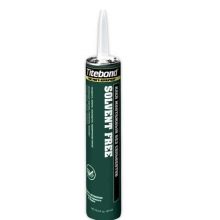
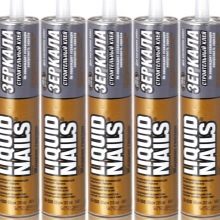
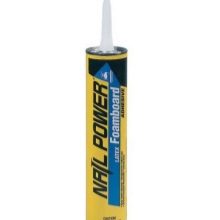
For the installation of skirting boards, moldings, platbands and other similar elements, it is better to use Tigger construction adhesive and Solvent Free... They are distinguished by their high setting speed, which not only makes the work more convenient, but also contributes to the precise preservation of the position of the attached finishing element.
For fixing massive objects, highly specialized formulations are intended. Heavy Duty, LN 901 and Zigger 99.
These recommendations are an approximate choice of the listed formulations for certain situations and do not limit their use in other areas.
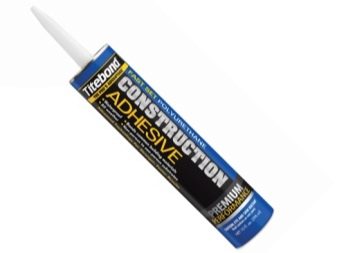
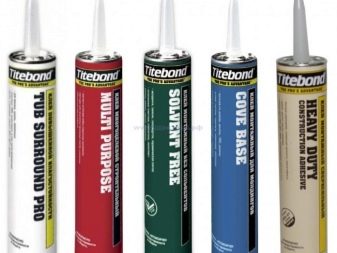
Recommendations for use
The method of working with liquid nails is not particularly difficult, however, in this matter, it is worth adhering to the correct procedure in order to achieve the optimal result at the lowest cost.
The whole process is quite simple and in many respects this is provided by a convenient form of release: the ready-made solution is packed in tubes, from which you only need to squeeze the composition onto the work surface.
The correct way to do this is as follows.
- Preparation of the work surface. Before applying "liquid nails", the surface must be cleaned of small debris, and then treated with a degreaser.

- On the prepared surface, "liquid nails" are applied pointwise, and if you need to attach a massive object, then with a snake. It is more convenient to squeeze the mixture out of the tube with a special gun.
- After applying the composition, the surface is tightly pressed against the one with which it is glued. In this position, the objects must be held for several minutes until the composition is set. If a massive part is fixed by weight, then it is necessary to ensure fixation until it dries completely. At the setting stage, it is possible to change the location of the object, after the final hardening - no longer.
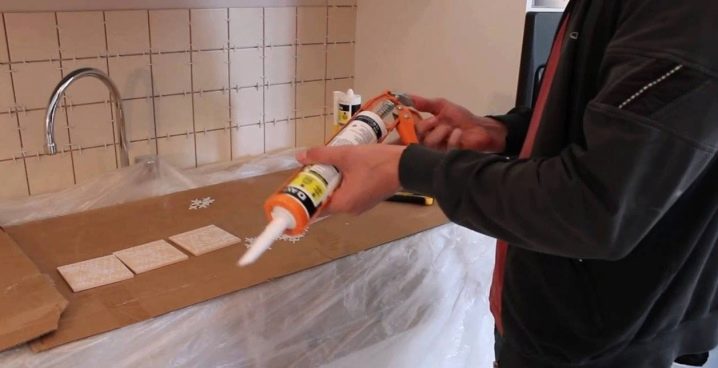
A special gun is designed to optimize the work with a tube of glue. Outwardly, it resembles a syringe, a balloon is inserted inside. A special mechanism helps to squeeze the solution onto the work surface. The pistol itself is designed as simply as possible, and the principle of its operation is intuitive. Products are of two types: frame and sheet. The first ones are more reliable and fix the tube tightly. Also, the design of the pistol can have a reverse function. It makes it easy to use for people without much construction experience.
In its absence, it is necessary to understand in advance the distribution of the entire volume of the balloon in a short period.

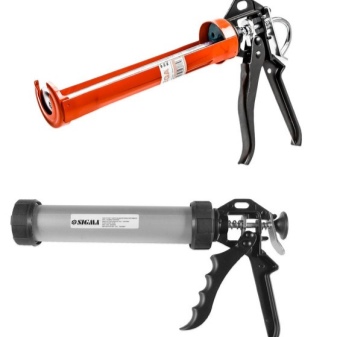
When working with "liquid nails", situations arise in which you need to clean certain surfaces that are soiled with the composition.
In this case, you will need the following tools for cleaning:
- solvent;
- special cleaner;
- water;
- sponge;
- scraper.
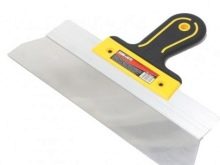

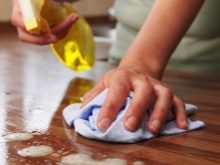
Depending on the time that has elapsed since the "liquid nails" hit the surface, different situations are distinguished.
- Stains formed shortly before their detection, that is, from a not yet dried composition, can be easily cleaned with warm water, to which a few drops of organic solvent have been added. This solution can be used to clean almost any surface due to its high efficiency and safety for the material.

- In the case when enough time has passed for the composition to harden, more serious measures will be required. In building markets, a special substance is sold for cleaning "liquid nails". Always wear gloves before working with a cleaner containing aggressive components. Having poured a certain amount of cleaner into the container, a sponge is dipped there, after which it is applied to the stained area and held for about 15-30 seconds. Then the sponge is removed and a neat and unhurried treatment of the stain with a scraper begins, so as not to spoil the material. It is categorically not recommended to squeeze out the sponge in order to squeeze out the cleaner - drops of the composition may get into the eyes.

An additional cleaning step is based on the UV vulnerability of the liquid nails. Sunlight alone will not remove the stain, but before treating the stained surface with a cleaner, it can be placed in direct sunlight for several hours. This will weaken the strength of the stain and facilitate the subsequent process. After a lapse of time, cleaning is carried out according to the method described above.
It is quite difficult to scrub or wash "liquid nails" at home. It is best to dissolve the composition with a special agent, after which it is easy to remove.

How long do they dry?
The transition time of the composition from one state to the next varies depending on the specific brand.
On average, the following indicators can be distinguished:
- transition from completely liquid state to primary setting: from 2-5 minutes for formulations with accelerated hardening, up to 20-30 for standard options;
- the period of complete hardening occurs in the interval from 12 to 24 hours after the application of the composition;
- the final polymerization of the composition is achieved after about 6-7 days.

Advice
- Compositions that use synthetic rubber as a solvent should only be used in protective equipment: a mask and gloves, and even better with glasses.
- Neoprene-based "liquid nails" should be stored in a cool, low humidity environment.
- Polyurethane compounds adhere poorly to Teflon and polyethylene types of surfaces.
- When mounting massive objects suspended by weight against a wall or ceiling, a structure that looks like a support is required for the period of complete drying of the composition.
How to properly fill and use the Liquid Nail Gun, see the following video.













The comment was sent successfully.